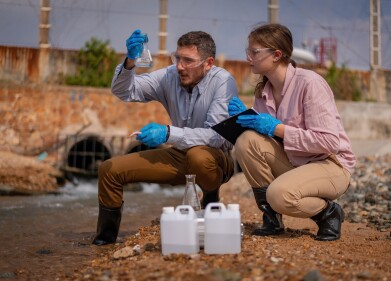Water/wastewater
Why Is Cape Town Running Out of Water?
Jan 29 2018
South Africa’s second largest city is under severe warning. Cape Town is at risk of losing its entire water supply, meaning its four million citizens will be without access to clean drinking water. After months of water restrictions, ‘Day Zero’ now seems imminent. Read on as we look at how the city has found itself in this predicament.
How much water is left?
Cape Town is currently battling with the worst drought conditions the city has seen in over a century. The city’s dams are reportedly just 17.2% full, unlike the abundant Schlegeis reservoir – an innovative water source which even acts as a renewable energy source in Austria.
Unfortunately, in Cape Town, it’s showing no signs of increasing. If the city’s water levels fall beneath 13.5%, officials will be forced to turn off the taps – known as ‘Day Zero’. It was originally estimated to be on the 22nd April 2018. However, with the Capetonians making very little effort to reduce their water usage, Day Zero has now been brought forward to 12th April.
Where has the water gone?
The population of Cape Town has been asked to use water sparingly, exceeding no more that 87 litres per day. Waste water from showering and washing dishes has been recommended for use on plants and flushing toilets so that drinkable water is not being wasted.
However, these pleas have fallen on deaf ears with the amount of remaining water still dropping at an alarming rate. Patricia de Lille, the city’s Mayor, has spoken about the urgency of the situation. "Despite our urging for months, 60% of Capetonians are callously using more than 87 litres per day. It is quite unbelievable that a majority of people do not seem to care and are sending all of us headlong towards Day Zero."
What will happen when all the water has gone?
Once the water has been switched off, the only way Capetonians will be able to get access to clean drinking water will be from 200 water distribution points around the city. People may have to queue for hours on end at each point to receive a daily ration of 25 litres of water. There will still, of course, be bottled water available in shops and supermarkets. However, with a very high demand, stock may well be limited and prices could increase drastically.
Digital Edition
IET 35.2 March
April 2025
Air Monitoring - Probe Sampling in Hazardous Areas Under Extreme Conditions - New, Game-Changing Sensor for Methane Emissions - Blue Sky Thinking: a 50-year Retrospective on Technological Prog...
View all digital editions
Events
Apr 08 2025 Birmingham, UK
Apr 08 2025 Targi Kielce, Poland
Apr 08 2025 Baku, Azerbaijan
Apr 08 2025 Bahrain
Apr 10 2025 Beijing, China



















